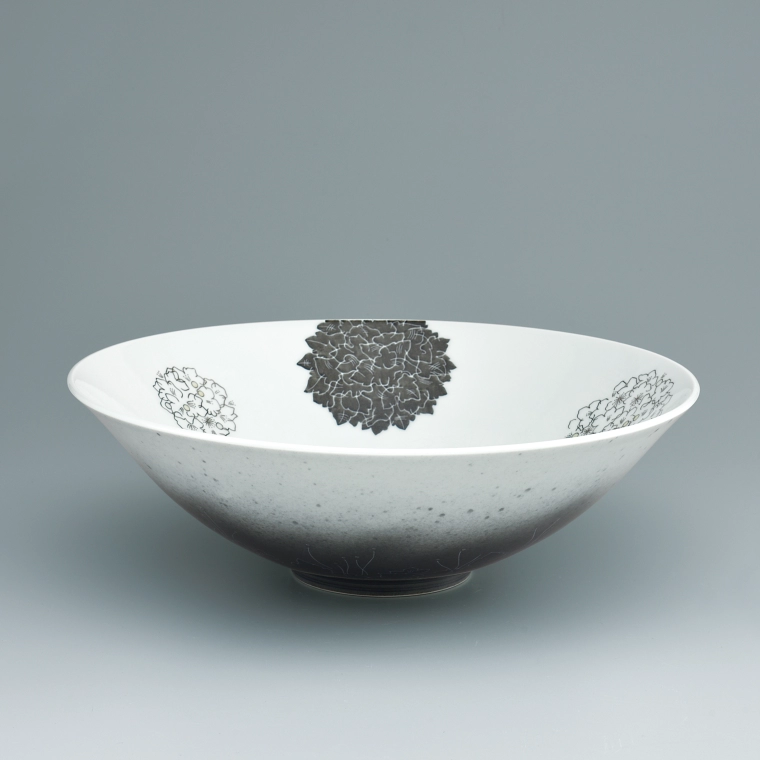Bowl with Pearlbush Design in Overglaze Enamel and Sumi-hajiki
Year.2018Imaemon Imaizumi XIV
1962 -- Ceramics(Living National Treasure)
-
Price Range
$1,000 - 34,000
Info
The prices of the artworks on Gallery Japan are determined by the artists themselves and are published directly on the website.
close - Awards at Japan Kōgei Assoc. Exhibitions : 4
About the Artwork
I used the sekka sumihajiki method on the white base to express the leaves, stems and buds of Japanese anemones. Inside the circles, I drew flower petals and buds. I tried to blend in the impressive yellow color of the flower into the calm and peaceful world of Japanese anemones.
Techniques
Sekka sumihajiki (decorating with white slip, glazing and firing, making the patterns remain white after firing), platinum glaze, sumihajiki (drawing patterns in ink before applying cobalt oxide, glazing and firing, making the drawn patterns remain white after firing)
Description
-
CategoryCeramics
-
MaterialsPorcelain
-
Year presented2018
-
RarityUnique
Techniques Used
Overglaze enamel
Overglaze enamel decorations (iro-e, literally “colored pictures”) are achieved by applying designs to the surface of already glazed and fired porcelain. The decorations are painted over the glaze, and the piece is fired again at a low temperature of approximately 800℃. The pigments used in traditional overglaze decorations are known as wa enogu (“Japanese paints”) and offer a palette of colors such as red, blue, yellow, green, and purple. Overglaze enameling may also be done with Western pigments (yō enogu).
Ink resist decorations
Ink resist (sumihajiki) techniques developed in the seventeenth century as a method for reserving white spaces in designs on Nabeshima ware, a type of high-quality gift porcelain fired in the Saga Nabeshima domain’s official kilns. Sumi ink is used to paint designs on the vessel, over which colored pigments are then applied. The ink, which contains animal glue, repels the water in the pigment, preventing it from adhering to the body of the piece. When the vessel is bisque fired, the ink evaporates, leaving behind white designs in its place.
“Snowflake” ink resist decorations
The “snowflake” ink resist (sekka sumihajiki) technique is an original innovation by Imaizumi Imaemon XIV. The technique combines white slip decorations and brush-painted ink-resist designs. By using a slip that is paler than the porcelain, the technique produces subtle expressions. Successfully combining materials with varying contraction rates requires special consideration, both in respect to the application of designs and the firing temperatures used to evaporate the ink resists.
Selected exhibitions
- The 65th Japan Traditional Kōgei Exhibition (2018)
- Selected
Please feel free to contact us to commission work, check artworks available for purchase etc.

